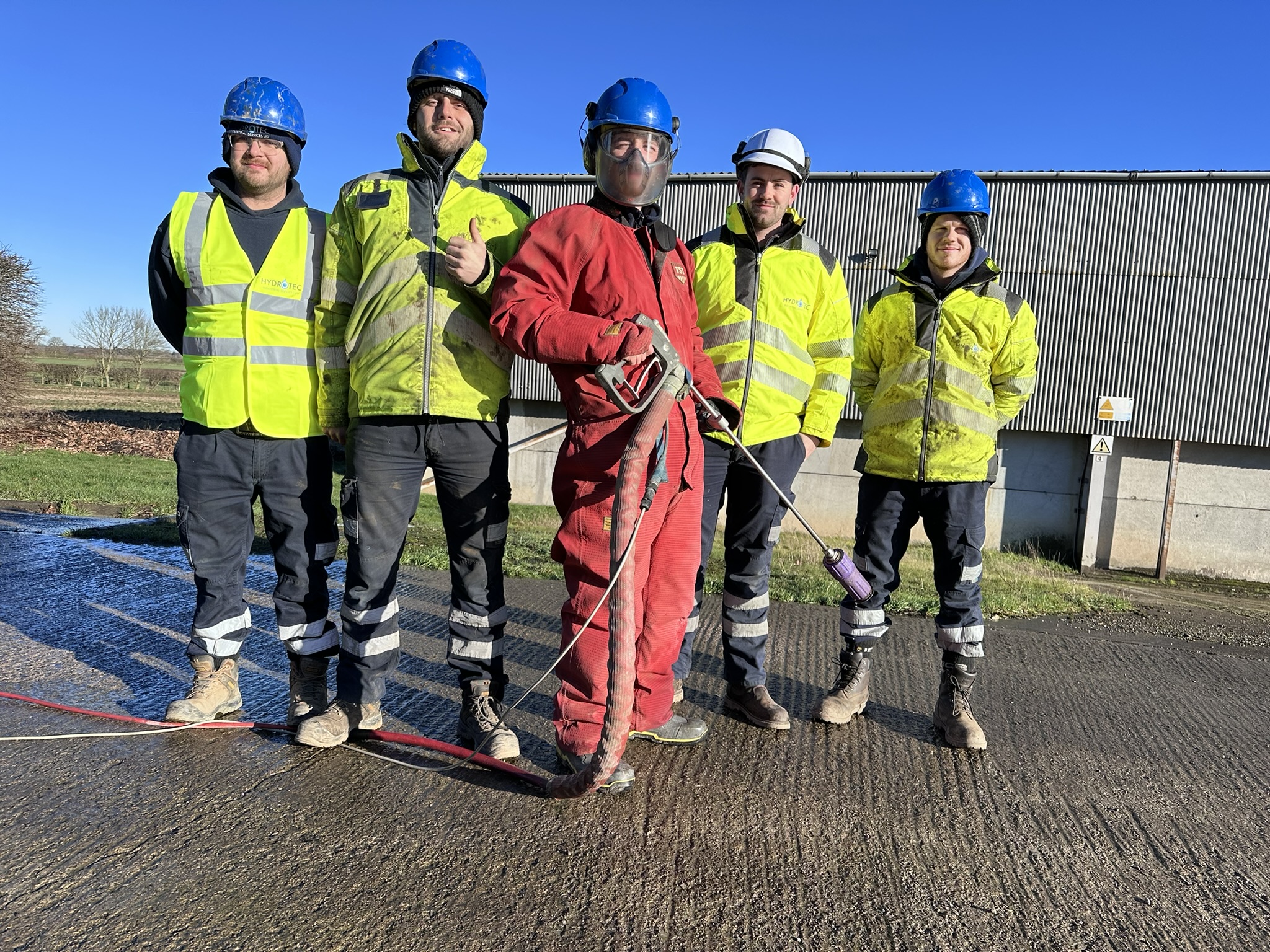Safety Awareness Training
Contact usThe Water Jetting Association (WJA) Approved Safety Awareness Course
Who is the course for?
The Safety Awareness Course is essential to all of those working in the Water Jetting industry as health and safety within the industry is of paramount importance. Well trained and competent staff will have a greater awareness and appreciation of safe working practices with high pressure water jetting. Councils, insurance companies, water utilities and major contractors demand that staff have correct and current training and hold valid card.
The Safety Awareness course is essential as it is a prerequisite to our other courses. The card lasts for three (3) years. After three years, another Safety Awareness course must be taken and passed in order to re-validate other course cards.
Are there any prerequisites?
There are no prerequisites.


What is involved?*
This is an entry-level course and is a mandatory one-day class-based course covering all main areas of water jetting operation and safety, including types of water jetting, water pressure and flow rates, risk assessment, and the use of safety clothing.
This is a theoretical classroom-based course. At the end of the day there will be a question paper with 20 questions with a pass mark of 75%.
Once the course has been successfully completed participants will be issued with a photocard which are valid for three years along with granted access to the WJA App and are issued by the Water Jetting Association (WJA). The Photocard are recognised by the Health and Safety Executive (HSE) and are City and Guild Accredited (C&G). These are valid for three years and the course must be repeated before the Photocard can be renewed. Please note -. If your Safety Awareness module goes out of date, for any reason, your other modules immediately become invalid. A valid Safety Awareness module is required to keep all modules validated.
Upon successful completion of the course, candidates receive the WJA Safety Awareness ID Card. It’s important to note that this card is not valid for operational use. In addition to the physical photocard, candidates gain access to a digital version via the WJA App — part of the Water Jetting Association’s drive toward digital transformation. The app provides convenient access to ID credentials while significantly reducing the reliance on printed materials, aligning with the WJA’s goal of promoting environmentally friendly and efficient certification processes.
Registration and Introduction
Applications and Machines
Cleaning and surface preparation – surfaces/drain and sewers/pipes/tubes. Jet cutting – precision and volume removal. Effect of varying pressure/flow at the nozzle. Range of jetting machines, configurations and categories (Pressure Washers/General Purpose/Medium-Heavy Duty/UHP/Drain and Sewer Jetters).
Legislation and the Water Jetting Association (WJA) Codes of Practice
Health & Safety at Work Act. WJA Codes of Practice, status, use and recognition by the Health and Safety Executive (HSE). Management Regulations – Risk Assessment, Personal Protective Equipment (PPE) at Work Regulations, COSHH. Employer/Employee responsibilities. Enforcement Powers. Other relevant legislation – e.g. Environmental Protection Act, Control of Pollution Act.
Jetting Equipment – Nozzles
Jet principles – purpose of nozzles, power of water jet, jet pressure/flow characteristics, jet reaction force. Types of nozzle – forward facing, fixed and spinning jets, multi-jet fixed & jet spinning nozzles.
Jetting Equipment – Pumps
Pump configuration – standard piston, plunger pump, positive displacement action, operating features, effects of blockages, variation of plunger sizes. Other pump configurations, diaphragm and intensifier types. Drive arrangements, engine/electric motor, hazardous area equipment Water supply/delivery features – filtration requirements, boost feed pumps, pulsation dampeners, jump-jet. Pressure safety relief options – relief valve/bursting disc. Pressure gauge features.
Jetting Equipment – Pressure Controls
Dump and dry shut controls, fail-safe/selector versions, direct manual operation/remote operation via electric-pneumatic-hydraulic controls, automatic unloader valve for dry shut, pressure regulators, automatic off-load engine speed control systems.
Jetting Equipment – High Pressure Hose
Hose construction and pressure ratings, external and internal damage possibilities, hazards arising from damaged hoses, inspection requirements. Hose end fittings, construction/assembly/testing. Connectors and hose end couplings – types and features. Bore size & flow ratings. Hose for general/high flow/small bore tube and pipe cleaning. Pressure drop due to flow through hose and lances – effect on pressure available at the nozzle.
Water Jetting Hazards
Hazards arising – directly from the water jet – from operational regime – from site environment.
Water Jetting Injuries
Effects of impact by high pressure water jet, nature of internal injuries caused, action in event of a jetting injury -awareness of possible absence of visual injury and use of WJA Medical Card.
Personal Protective Equipment (PPE)
General principles regarding use of PPE, as a last resort. Main body protection – limits on effectiveness against direct impact of water jet. Protection of head/hands/feet/hearing/respiration. Particular requirements when using UHP.
Operational Procedures
Routine care and inspection, site preparations, preparations for operation, team operation. Safety points during operation – use of manual jetting gun/lance, tube/pipe/drain cleaning nozzle/lance/hose combinations & techniques. Safe use of non-standard equipment – e.g. tee nozzle. Site shutdown and antifreeze procedures. Use of DO/DO NOT GUIDE
Summary
Review of course content as above, with opportunity for any further discussion before Questionnaire.
Get in Touch…
Contact us today to learn more about our Water Jetting Training Services. You can also book our open courses online, simply select your preferred date on our calendar.
